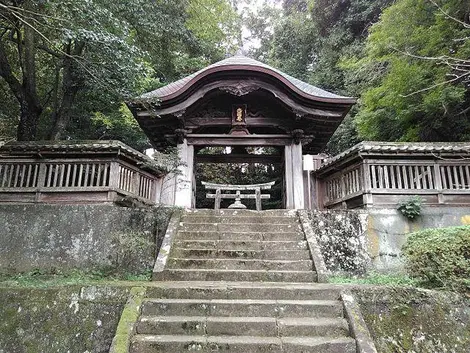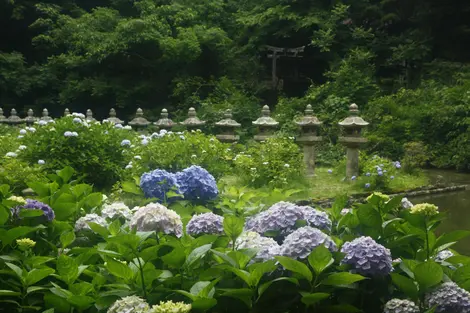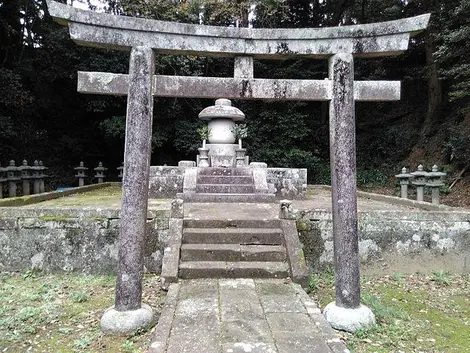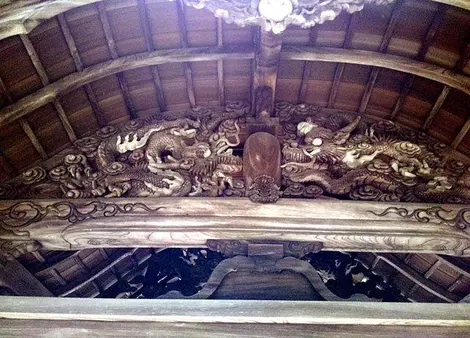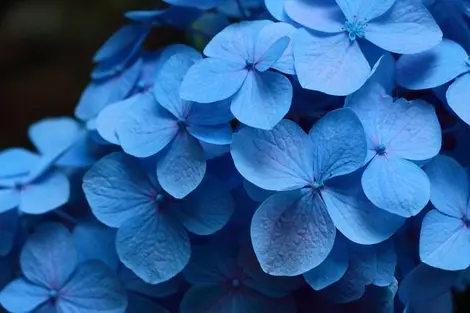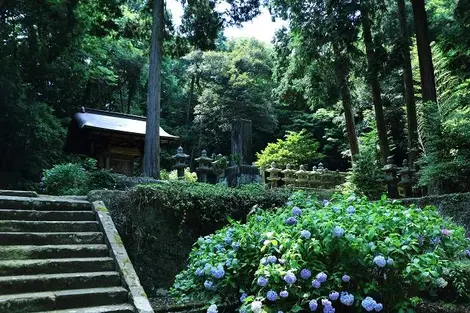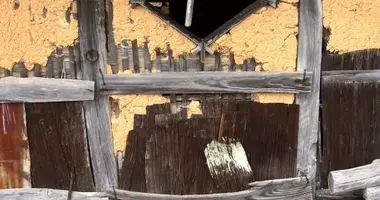Gessho-ji 月照寺
The temple of the lords of Matsue
Not far from Matsue Castle, Gessho-ji is both the family temple and burial place of the Matsue daimyo, lords of the Matsudaira clan. Nicknamed "the temple of hydrangeas", the site is the scene of a famous ghost story; that of a huge stone turtle devouring the inhabitants of the city.
Matsudaira Cemetery
In 1664, the first lord of the clan, Matsudaira Naomasa (1601-1666), erected Gessho-in for the burial of his mother, on the site of some ancient temple ruins. In doing so, he laid the first landmark of his clan's cemetery and gave birth to Gessho-ji. Thus, the temple went on to host the burials of the nine lords of Matsue who reigned over the city between 1638 and 1871. The tombs, beautiful and individual, adorned with stone stelae (upright stone slabs with commemorative inscriptions or designs), are scattered throughout the temple. Although decorated with the symbols of each of the daimyo, the tombs are all of a similar design.
Read : Izumo Taisha Shrine
You must first cross the wide carved door (karamon), that indicates the prestige and authority of the deceased, then take a small paved path. The entrance to the tomb is marked by a stone torii and delimited by the harmika, a sacred fence. Framed by stone lanterns (toro), the slightly elevated tomb supports the funerary stele called gorinto in Japanese. According to Buddhist tradition, the gorinto consists of five blocks of stone with distinct shapes each symbolizing the elements of the universe (from the bottom up): earth (a cube), water (a sphere), fire (a pyramid), wind (a half-sphere) and sky (a stylized lotus flower).
Stelae among the hydrangeas
The burial sites of certain lords stand out. The tomb of Matsudaira Naomasa, grandson of shogun Ieyasu Tokugawa, has the distinction of being surrounded by moats and many hydrangeas that bloom in mid-July. The stele of the clan of the 7th daimyo, Matsudaira Harusato (1751-1818) is located on a hill overlooking that of Naomasa. Better known as Matsudaira Fumai, this lord and great tea master profoundly reformed his fiefdom. At the origin of great administrative and industrial measures, he rescued Matsue from the economic slump the city was languishing in. To salute his providential action, his karamon, adorned with a dragon and bunches of grapes, is carved by Kobayashi Jodei. Other daimyo are buried apart - according to a mathematical logic, peer nobles of the line (the 2nd and 8th) are south, and odd (3rd to 7th) are north.
Read also : Matsue Travel Guide
The ghost turtle
The Gessho-ji has a huge stone turtle, specially made to look after the 6th Lord, Matsudaira Munenobu. The animal has always been considered a ghost. His story was told by the Matsue-based Irish writer and writer, Lafcadio Hearn (1850-1904), in his book "Ghosts of Japan". According to legend, the turtle came alive at night, terrifying and devouring the inhabitants. The monk of the temple, using intense prayer, made a pillar of stone fall from the sky onto his back, immobilizing it for eternity. Today, you can approach and caress the head to ensure a long life without fear for your safety...







